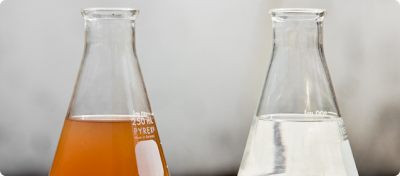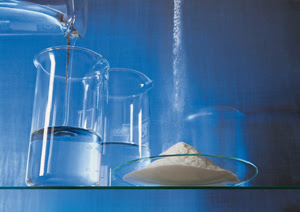That sports drink wasn’t exactly Nectar of the Gods to begin with, and a few hours fermenting in a warm plastic bottle hasn’t helped its palatability. Your gut appreciates it even less than your taste buds and starts making its displeasure painfully known. And to add insult to injury, the stuff in your bottle costs as much as your favourite beer!
Practically every endurance athlete has had this experience. Most sports drinks suck. Not only are they obnoxiously flavoured and hard on your gut, but many have questionable ingredients, creepy additives and silly price tags. So I mostly avoided them until my foray into long course racing forced me to develop a serious fueling/hydration strategy, often referred to as triathlon’s “fourth discipline”.
As an avid DIYer, I figured I could do better than commercially available options. So I did some research—journal articles, forums, blogs—whatever I could find. I’m not a sports nutrition expert, but I tried to separate the science-based from the anecdotal to boil sports drinks down to their bare essentials. What I discovered is that you can make a simple, effective and palatable sports drink for cents per serving.
A quick search turns up many recipes for maltodextrin-based sports drinks, but few provide the background or justification to make them a compelling choice. Here you’ll find both.
Why mix your own sports drink?
Two reasons: customizability and cost savings.
Every sports nutrition company claims to have the secret sauce with their proprietary blend of carbohydrates, electrolytes, flavour and even protein or other dubious ingredients. At best, some of these extra ingredients may do nothing. At worst, they may impede carbohydrate absorption or cause gastric distress.
Quite simply, if you are using a sports drink as your primary fuel source, the goal is to deliver the most carbohydrate as quickly as possible in a gut-friendly manner. Secondary objectives are replenishing excessive fluid and electrolyte losses, which can also be accomplished by taking in water and electrolytes separately. Everything else is just window dressing.
Some products may work for you. Others may work for shorter or lighter intensity activity. But the longer or harder you go, or the more concentrated your bottles, the greater the risk in using a sub-optimal formula. And let’s not forget that designer sports drinks can cost a few bucks per serving. Mixing your own is the only way to get a formula tailored to your specific needs at a fraction the cost of brand name options.
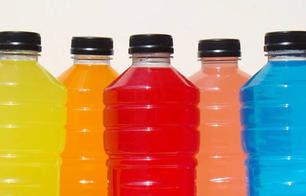
Do I need a sports drink?
For most training sessions, eating real food and drinking water will probably do the trick quite well. For shorter, less demanding training sessions, you don’t need anything at all. For racing and some key workouts, the convenience of having fuel and fluid in one bottle can outweigh the potential drawbacks. It’s no fun to fiddle with wrappers, gnaw on a bar or slurp down a gel while you are sucking wind!
For shorter duration races (1-2 hours), I’ve always gotten by with a minimalist approach: ~100-150 calories and a little fluid. Even if your body has enough fuel stored to last the race, it’s still a good idea to sip something sugary. Many studies have shown that simply rinsing a carbohydrate solution around in your mouth (not even swallowing!) boosts performance.
What are the drawbacks to concentrated sports drinks?
Fueling and hydration are independent needs. Combine your calories and fluids in one bottle and you risk ending up under-fueled and over-hydrated or vice versa. A highly concentrated solution can also lead to cramping, bloating or worse… For this reason, some people don’t advocate using a sports drink as your primary fuel source. However, this approach is convenient and it works well for some people.
What is maltodextrin?
Maltodextrin is a super high glycemic index, easily absorbed complex carbohydrate with little taste or sweetness. It consists of long chains of glucose (aka dextrose). As a pure carbohydrate, it contains about 4 calories per gram. Although it is a common food additive and the main ingredient in many sports nutrition products, it seems to be a well kept secret. Savvy and thrifty endurance athletes have been using it for decades.
Not all maltodextrin is created equal. It is rated according to its dextrose equivalent (DE) which ranges from about 3-20 for maltodextrin. The lower the DE value, the longer the glucose chains, the lower the sweetness, the lower the solubility. Most sources suggest that lower DE (longer chain) maltodextrin is better for sports drinks because it yields a solution with lower osmolarity (a measure of how much “stuff” is in solution) for a given carbohydrate concentration. Excessive osmolarity can impede carbohydrate absorption and lead to gastric distress.
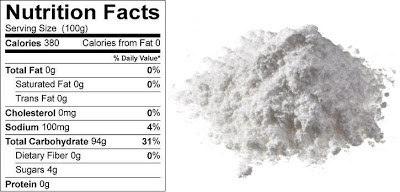
Why is maltodextrin better than simple sugars?
As a fuel source, maltodextrin is preferable to sports drinks that only contain simple sugars (i.e. glucose, fructose) because it produces a solution with lower osmolarity (see above). However, there are benefits to combining multiple carbohydrates (see below: What about fructose?). Another plus is that maltodextrin doesn’t have the cloying sweetness of simple sugars at higher concentrations.
Where can I find maltodextrin?
You can buy it in bulk from many brewing supply stores. I recently ordered some online from Toronto Brewing Co. for $3/lb. Pure maltodextrin can also be found under various brand names at supplement stores, but be prepared to pay a lot more.
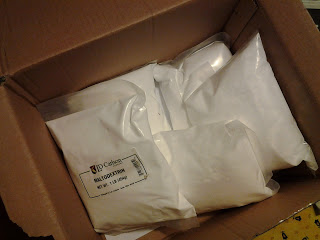
How do I use maltodextrin?
The first step is to figure out how many grams of carbohydrate (or calories) you want in a bottle. Generally, 30-60 grams carbohydrate per hour is advisable for exercise lasting longer than 90 minutes. And more is better, provided your gut can handle it.
I typically aim for 50-75 grams of carbohydrate (200-300 calories) per bottle and assume that I’ll drink one bottle per hour as my main source of fuel. If you plan to use other fuel sources as well (e.g. on-course nutrition), adjust the carbohydrate content of your bottles accordingly. On a hot day, I would go with a more dilute solution assuming I’ll drink more.
Since the density of maltodextrin can vary significantly, a kitchen scale is the only way to mix accurate solutions. If you aren’t hung up on knowing the exact carbohydrate content of your drink, you can work in volume with a measuring cup. Just remember that if you switch to a different type of maltodextrin, your formula may have to change as well.
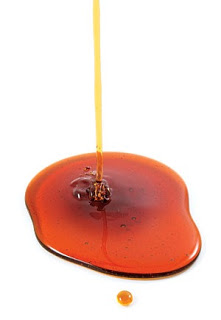
What about fructose?
Many studies (e.g., 1, 2, 3, 4) have shown that combining carbohydrates from different sources results in greater absorption and possibly reduced gastric distress. Since maltodextrin is broken down exclusively into glucose, it is a good idea to include some fructose. These two sugars have different absorption pathways and can significantly increase the fuel available to your body when combined.
The ratio of maltodextrin to fructose that optimizes performance is not known and may vary from person to person. I have seen drinks ranging from 0-50% fructose (by weight), with one third or less fructose being the most popular. Be cautious with fructose; some finger it as a major culprit of gastric distress. Some people vary the ratio of simple sugars to maltodextrin depending on the duration and intensity or exercise. I haven’t found any good justification for this since maltodextrin rapidly breaks down into glucose.
Good sources of fructose include pure fructose powder, agave nectar and the much-maligned high-fructose corn syrup (HFCS). Since some of these can be hard to find, I have used pure maple syrup or white sugar (aka sucrose) which both break down into roughly 50% glucose and 50% fructose. Any fructose source that also contains glucose is not ideal because it is redundant when paired with the glucose from maltodextrin.
And electrolytes?
As with carbohydrate concentration and type, there’s no optimal electrolyte intake for everyone and every race. Individual needs vary greatly depending on sweat rate (a function of both intrinsic and environmental factors), sweat composition and exercise duration. The only way to determine what works best for you is experimentation.
Sodium is the key electrolyte lost in sweat along with potassium, calcium, magnesium, chloride and many other trace elements. Table salt (sodium chloride) is a common ingredient in DIY sports drinks, even though it doesn’t replace all your electrolyte losses. To cover all the bases, there are countless electrolyte products marketed to athletes. They come in tablet, capsule and powder form. Generic electrolyte products found at many drugstores are an inexpensive alternative.
I tend to forgo electrolytes for shorter races (<2 hours). This may not be advisable if you are a heavy/salty sweater or expect hot conditions. For longer races, and especially hot ones, the general consensus is that skipping electrolytes is asking for trouble. As a side note, muscle cramping is often blamed on electrolyte deficiency, but fatigue may actually be the cause in many cases. Finally, don’t forget that electrolytes, just like other ingredients, affect osmolarity (discussed above), so more is definitely not better.

A basic recipe
Here’s a sample recipe for a bottle with ~60-75 grams of carbohydrate (~240-300 calories). The key is finding a formula that works for you through trial and error in training. Never try new things on race day!
- 50 grams maltodextrin (roughly ½ cup)
- 10-25 grams fructose source (roughly 1-2 tbsp, e.g. fructose powder, HFCS, agave nectar, maple syrup, sugar, honey)
- optional: electrolytes (e.g. tablets, capsules, powder)
- optional: caffeine
- optional: flavour (e.g. sub juice crystals for sugar.)
Dissolve the above in a 500-750 mL (~20-25 oz) bottle of water. The maltodextrin may take some time to dissolve, especially if it is low DE. Warm water speeds up the process.
Enjoy!
